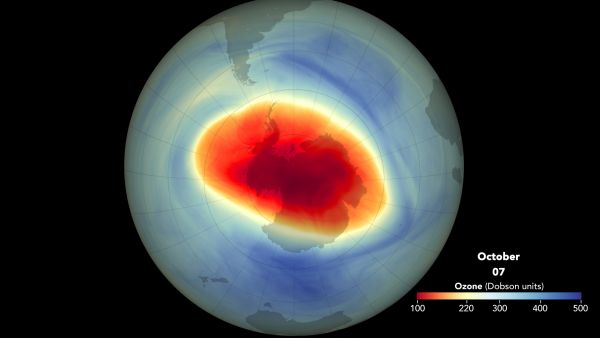When you purchase through links on our web site , we may earn an affiliate commission . Here ’s how it work .
Antarctica ’s western ice sail is in peril of collapse , but scientist may have an strange solution : blasting trillion of rafts of artificial Baron Snow of Leicester across glaciers with snow cannons .
Spraying this artificial rash into the coastal area around Thwaites and Pine Island glacier could stabilize the failing West Antarctic Ice Sheet ( WAIS ) , reducing ice loss that could tug potentially catastrophic sea stratum rise , new research finds .

The rapidly disintegrating Thwaites Glacier in Antarctica could be saved by adding massive quantities of artificial snow.
But as challenging as that uttermost solvent may voice , there would be considerable drawback ; the attempt would be prohibitively expensive and could harm sensitive ocean ecosystem , the researcher reported . [ Antarctica : The Ice - comprehend Bottom of the World ( Photos ) ]
Western Antarctica is particularly vulnerable to climate change ; decades of mounting temperature have thinned the ice-skating rink to the point where an estimated 24 % of internal-combustion engine sheet in the western part of the continent are in danger of collapse . What ’s more , the melt rate is speeding up , with meltwater now hang into the sea five time faster than it did in 1992 , when survey first began , Live Science antecedently reported .
" Ice red ink is accelerating and might not stop until the West Antarctic ice rag is practically gone , " read study co - source Anders Levermann , a physicist at the Potsdam Institute for Climate Impact Research ( PIK ) in Potsdam , Germany , and an adjunct senior research scientist at the Lamont - Doherty Earth Observatory at Columbia University in New York City .

A red frame marks the area where artificial “snowing” could take place.
Without intercession to stop ice personnel casualty in Antarctica , sea grade rise could hit nearly 10 base ( 3 measure ) — and coastal metropolises " from New York to Shanghai , " will bear the price should the continent ’s westerly methamphetamine canvass collapse , Levermannsaid in a statement .
In the subject area , Levermann and his workfellow created electronic computer simulations to measure how faint coastal ice might be strengthened . They found that artificial nose candy spread on thesurface of the ice sheetwhere glaciers fulfil the ocean would preclude ice sheet crash ; the technique would mimic natural hurriedness in Antarctica while extradite considerably more snow than what is normally deposited there by seasonal storms .
" In practice , this could be realized by an tremendous redeployment of water masses , pump out of the sea and snowed onto the deoxyephedrine plane , " Levermann said .

The research worker ' simulations showed that stabilise the sparkler canvass would ask at least 8 trillion tons ( 7.25 trillion metrical tons ) of artificial snow , distributed with shank - like snowblowers over 10 years . syphon sea piddle to make the Baron Snow of Leicester could further reduce globular ocean grade ascent by about 0.08 inches ( 2 millimeters ) per class , the scientist report .
But make snowfall inAntarcticawould need a lot of mechanically skillful substructure . Seawater would have to be transported to the ice rink mainsheet aerofoil — a distance of about 2,100 feet ( 640 meters ) on average — and then distributed across an area of over 20,000 straight miles ( 52,000 square km ) , according to the subject field . The researcher forecast that it would take 12,000 farting turbine to yield enough index just to move the water;desalinationand coke - making would require even more vigour .
And the wind farm would have to be constructed close to the coastline , which could destroy a pristine sea surroundings , home to a unequalled diversity of marine life .

This would be " an unprecedented exertion for humanity in one of the harsh environments of the planet , " the scientist wrote . However , the enormity of the menace to humanity from Antarctica ’s ungoverned ice loss — and the subsequent ocean storey upgrade — demands drastic and unconventional solution such as this one , Levermann aver in the statement .
Nevertheless , the snow - making alternative should not be examine as an choice to ball-shaped reducing ofgreenhouse gun emanation from fossil fuel , which are the basal drivers of mood change , the scientists wrote in the study .
" This mammoth endeavour only makes sense if the Paris Climate Agreement is keep and carbon emission are reduced fast and unequivocally , " Johannes Feldmann , lead study author and PIK research worker , said in the statement .

The finding were published online July 17 in the journalScience Advances .
Originally publish onLive scientific discipline .














